Photoacoustic microscopy: principles and biomedical applications
- PMID: 30603203
- PMCID: PMC6208522
- DOI: 10.1007/s13534-018-0067-2
Photoacoustic microscopy: principles and biomedical applications
Abstract
Photoacoustic microscopy (PAM) has become an increasingly popular technology for biomedical applications, providing anatomical, functional, and molecular information. In this concise review, we first introduce the basic principles and typical system designs of PAM, including optical-resolution PAM and acoustic-resolution PAM. The major imaging characteristics of PAM, i.e. spatial resolutions, penetration depth, and scanning approach are discussed in detail. Then, we introduce the major biomedical applications of PAM, including anatomical imaging across scales from cellular level to organismal level, label-free functional imaging using endogenous biomolecules, and molecular imaging using exogenous contrast agents. Lastly, we discuss the technical and engineering challenges of PAM in the translation to potential clinical impacts.
Keywords: Endogenous biomolecules; Exogenous contrast agents; Functional imaging; Molecular imaging; Photoacoustic microscopy; Structural imaging.
Conflict of interest statement
The authors declare that they have no conflict of interests.This article does not contain any studies with human participants or animals performed by any of the authors.
Figures




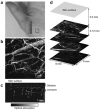

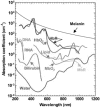

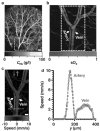
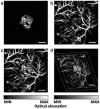
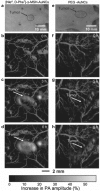
Similar articles
-
Sensitivity of photoacoustic microscopy.Photoacoustics. 2014 Apr 24;2(2):87-101. doi: 10.1016/j.pacs.2014.04.002. eCollection 2014 Jun. Photoacoustics. 2014. PMID: 25302158 Free PMC article. Review.
-
Seeing through the Skin: Photoacoustic Tomography of Skin Vasculature and Beyond.JID Innov. 2021 Jun 25;1(3):100039. doi: 10.1016/j.xjidi.2021.100039. eCollection 2021 Sep. JID Innov. 2021. PMID: 34909735 Free PMC article. Review.
-
Quad-mode functional and molecular photoacoustic microscopy.Sci Rep. 2018 Jul 24;8(1):11123. doi: 10.1038/s41598-018-29249-1. Sci Rep. 2018. PMID: 30042404 Free PMC article.
-
Resolution Enhancement Strategies in Photoacoustic Microscopy: A Comprehensive Review.Micromachines (Basel). 2024 Nov 30;15(12):1463. doi: 10.3390/mi15121463. Micromachines (Basel). 2024. PMID: 39770216 Free PMC article. Review.
-
A review of clinical photoacoustic imaging: Current and future trends.Photoacoustics. 2019 Nov 7;16:100144. doi: 10.1016/j.pacs.2019.100144. eCollection 2019 Dec. Photoacoustics. 2019. PMID: 31871888 Free PMC article. Review.
Cited by
-
Photoacoustic Imaging in Tissue Engineering and Regenerative Medicine.Tissue Eng Part B Rev. 2020 Feb;26(1):79-102. doi: 10.1089/ten.TEB.2019.0296. Epub 2020 Jan 14. Tissue Eng Part B Rev. 2020. PMID: 31854242 Free PMC article. Review.
-
Photoacoustic imaging on its way toward clinical utility: a tutorial review focusing on practical application in medicine.J Biomed Opt. 2023 Dec;28(12):121205. doi: 10.1117/1.JBO.28.12.121205. Epub 2023 Jun 8. J Biomed Opt. 2023. PMID: 37304059 Free PMC article. Review.
-
In vivo longitudinal visualization of the brain neuroinflammatory response at the cellular level in LysM-GFP mice induced by 3-nitropropionic acid.Biomed Opt Express. 2020 Jul 31;11(8):4835-4847. doi: 10.1364/BOE.393690. eCollection 2020 Aug 1. Biomed Opt Express. 2020. PMID: 32923081 Free PMC article.
-
Enhanced resolution optoacoustic microscopy using a picosecond high repetition rate Q-switched microchip laser.J Biomed Opt. 2022 Nov;27(11):110501. doi: 10.1117/1.JBO.27.11.110501. Epub 2022 Nov 29. J Biomed Opt. 2022. PMID: 36458112 Free PMC article.
-
Integrating photoacoustic microscopy with other imaging technologies for multimodal imaging.Exp Biol Med (Maywood). 2021 Apr;246(7):771-777. doi: 10.1177/1535370220977176. Epub 2020 Dec 9. Exp Biol Med (Maywood). 2021. PMID: 33297735 Free PMC article. Review.
References
Publication types
LinkOut - more resources
Full Text Sources
Other Literature Sources
Miscellaneous
